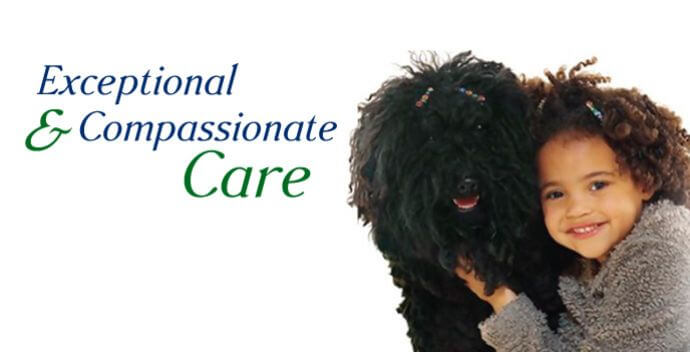How to Prepare for Puppies
 If you’ve got a female dog who you are planning to breed, or who has become unexpectedly pregnant we have tips to help you through your pet’s labour and birthing period. As with all major health issues, you should bring you dog into see your vet to make sure she’s in good health. Your vet might even suggest giving your dog vaccinations so she can pass her antibodies onto her pups.
If you’ve got a female dog who you are planning to breed, or who has become unexpectedly pregnant we have tips to help you through your pet’s labour and birthing period. As with all major health issues, you should bring you dog into see your vet to make sure she’s in good health. Your vet might even suggest giving your dog vaccinations so she can pass her antibodies onto her pups.
Meanwhile at home you should be preparing your dog a safe place to have her puppies. Find a box with 7″ sides and line it with old towels and baby blankets to make your dog comfortable. Once the box is ready you should place it in a dark space like a cupboard or a closet, and make sure your dog knows where the box is placed and rests there from time to time. Dog’s naturally seek dark, private spaces when they are preparing to give birth, which is why a closet or cupboard that your dog can access easily is the best place for the birthing box.
If you can calculate the birth date of the puppies you will be ready to check for the signs of labour. The gestation of puppies is 60-64 days from the last date of the mother’s heat. This is not an exact due date, but it gives you a rough estimate of the birth date. Around this date you’ll want to watch your dog for signs of labour. Around the due date you might notice your dog dragging towels or clothing to a dark place away from traffic and noise. Respect your dog’s need for this quiet safe space if you need to move her to the birthing box. On an interesting note, most doggy births occur at night time.
Once your dog reaches 7-8 weeks of pregnancy you should start taking your dog’s temperature rectally. When your dog’s temperature drops below 100 degrees (usually closer to 99), labor will start within the next eight to twelve hours. About 24 hours before labor begins the puppies’ milk is produced, the external genitalia become enlarged and soft, and a thick mucous discharge appears. At this time the dog will refuse food and become quite restless. Since birth is imminent, this is a good time to allow the dog some brief exercise, as well as one last chance for urination and bowel movements.
Dogs’ labour can last between 2-6 hours, however, if the labour lasts longer than 8 hours you should contact your vet immediately. Labour is imminent when your dog becomes ceaselessly restless. You’ll know the puppies are coming when you see a distinct discharge coming from the vulva (she will likely work hard at licking this away) and regular contractions. Contractions in dogs are not as noticeable in dogs as it is in humans, but her belly will feel solid in your hand when you feel it.
Your dog’s natural instincts will take over when she begins the birthing process. During this time you should allow her to do her own thing unless she starts panicking or something seems to be going wrong. The one thing you can do during the birthing process is clear the puppies away form the mother as she gives birth because she will be moving around and possibly trample the new born puppies. Make sure your wearing gloves if you’re going to handle the puppies. You can even use this time to clean the puppies off if the mother hasn’t done it already with a clean towel that has been kept separate.
The birthing process usually involves pups being birthed inside the amniotic sac, then being followed by a placenta. Occasionally the placenta of one pup will come out with the next, it’s natural and necessary for the mother dog to consume the amniotic sacs and placenta after (and during) the birth – this replenishes a lot of the nutrients and energy she looses during birth. After the first puppy, you should expect a puppy every 15 to 20 minutes. If a puppy is stuck and needs help to get out, pull gently, but make sure you wear gloves.
The umbilicus of each puppy will have to be cut with sterile scissors. Some dogs will cut the cord with the teeth, but if your dog doesn’t do this, use the scissors. Tie the cords with floss, making a strong knot just 1 inch above the abdominal area of the puppy. Tie a second floss and cut between the 2 ties of floss. The remaining floss can be removed after 10 minutes, after the blood has clotted.
Neonatal mortality (stillbirths and lifespans of only a few hours or days) are relatively normal for most littered mammals, so be prepared for this eventuality. In some cases you can help your pups live by giving them a gentle massage if you see them having problems breathing or moving around. You should also have a little store-bought puppy milk on hand in case the mother does not produce enough milk.
It is a good idea to have the mother examined by a veterinarian within 24 hours after whelping concludes to ensure that no puppies or placentas remain in the uterus. An injection to reduce the size of the uterus help prevent infections and other complications.
The mother will need more food once her appetite returns, and it should be divided into at least three daily feedings. Dietary supplements can assist milk production. Ask your veterinarian for specific formulations best suited to your dog. Fresh water should be available at all times. If dried milk accumulates, clean the mother’s nipples carefully with warm water.
Just remember that you dog’s instincts will do most of the work, that you are there to give encouragement to your dog and help if necessary. This is an important time for your dog and you, so stay calm and everything will be okay.










 Website Created by TCP Global Solutions
Website Created by TCP Global Solutions